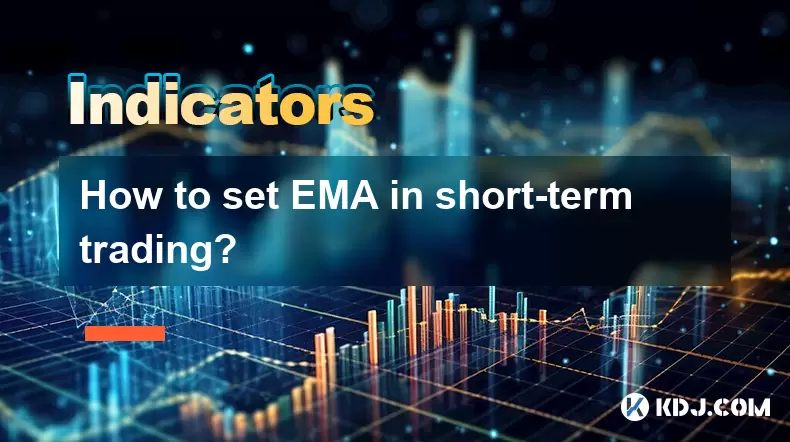-
 Bitcoin
Bitcoin $117800
0.49% -
 Ethereum
Ethereum $4432
0.55% -
 XRP
XRP $3.106
1.07% -
 Tether USDt
Tether USDt $1.001
0.01% -
 BNB
BNB $835.8
1.74% -
 Solana
Solana $189.1
2.72% -
 USDC
USDC $0.9999
-0.01% -
 Dogecoin
Dogecoin $0.2302
3.65% -
 TRON
TRON $0.3485
-0.69% -
 Cardano
Cardano $0.9212
-0.91% -
 Hyperliquid
Hyperliquid $46.97
1.45% -
 Chainlink
Chainlink $22.77
5.61% -
 Stellar
Stellar $0.4284
0.82% -
 Sui
Sui $3.766
2.82% -
 Bitcoin Cash
Bitcoin Cash $583.5
-0.82% -
 Ethena USDe
Ethena USDe $1.001
0.03% -
 Hedera
Hedera $0.2512
2.78% -
 Avalanche
Avalanche $24.18
2.27% -
 Litecoin
Litecoin $120.2
2.10% -
 Toncoin
Toncoin $3.450
1.96% -
 UNUS SED LEO
UNUS SED LEO $9.412
-0.92% -
 Shiba Inu
Shiba Inu $0.00001298
2.35% -
 Uniswap
Uniswap $10.99
3.75% -
 Polkadot
Polkadot $3.962
3.09% -
 Dai
Dai $1.000
0.00% -
 Bitget Token
Bitget Token $4.643
1.38% -
 Cronos
Cronos $0.1511
-0.08% -
 Ethena
Ethena $0.7246
3.18% -
 Monero
Monero $254.9
7.90% -
 Pepe
Pepe $0.00001100
3.32%
How to set EMA in short-term trading?
EMA is key in short-term crypto trading, with 9-day, 21-day, and 50-day periods used to spot trends and entry/exit points on platforms like Binance and Coinbase Pro.
May 22, 2025 at 11:49 am

Understanding EMA in Short-Term Trading
Short-term trading in the cryptocurrency market often involves quick decisions and rapid analysis of market trends. One of the key tools used by traders in this context is the Exponential Moving Average (EMA). The EMA is a type of moving average that places a greater weight and significance on the most recent data points, making it more responsive to new information compared to the Simple Moving Average (SMA). This feature makes the EMA particularly useful for short-term trading, where capturing quick price movements is crucial.
Choosing the Right EMA Periods for Short-Term Trading
Selecting the appropriate EMA periods is essential for effective short-term trading. The most commonly used EMA periods in short-term trading include the 9-day EMA, 21-day EMA, and 50-day EMA. Each of these periods serves a different purpose:
- 9-day EMA: This is a very short-term indicator and is highly sensitive to recent price changes. It is often used for identifying very short-term trends and potential entry and exit points.
- 21-day EMA: This period offers a balance between responsiveness and smoothing out short-term fluctuations. It is useful for confirming trends identified by the 9-day EMA and can help in making more informed trading decisions.
- 50-day EMA: This is considered a medium-term indicator and can help traders understand the broader trend within the short-term trading timeframe. It can be used to confirm longer-term trends that short-term traders might want to align with.
Setting Up EMA on Trading Platforms
To effectively utilize EMA in short-term trading, you need to set it up correctly on your trading platform. Here's how you can do it on some popular platforms:
On Binance:
- Open the Binance trading platform and select the cryptocurrency pair you wish to trade.
- Navigate to the chart section and click on the "Indicators" button.
- Search for "EMA" and select it.
- Enter the desired periods (e.g., 9, 21, 50) and click "Apply."
On Coinbase Pro:
- Log into Coinbase Pro and select your trading pair.
- Click on the "Advanced" tab to access the chart.
- Click on the "Indicators" icon and select "EMA."
- Input the periods you want to use and click "Add Indicator."
On TradingView:
- Open TradingView and select the cryptocurrency you are interested in.
- Click on the "Indicators" button at the top of the chart.
- Search for "EMA" and click on it.
- Enter the periods you want to track and click "OK."
Using EMA for Entry and Exit Points
Once you have set up the EMA on your trading platform, you can use it to identify potential entry and exit points in your short-term trading strategy. Here’s how:
- Entry Points: Look for instances where the price crosses above the shorter EMA (e.g., 9-day EMA). This can indicate a potential upward trend, suggesting a good entry point. Additionally, if the shorter EMA crosses above the longer EMA (e.g., 21-day or 50-day EMA), it can confirm the strength of the trend.
- Exit Points: Conversely, consider exiting your position when the price crosses below the shorter EMA. A cross below the longer EMA can signal a weakening trend and a potential exit point.
Combining EMA with Other Indicators
While EMA can be a powerful tool on its own, combining it with other indicators can enhance your short-term trading strategy. Some popular indicators to use alongside EMA include:
- Relative Strength Index (RSI): The RSI can help you identify overbought or oversold conditions, which can be useful in conjunction with EMA signals to confirm entry and exit points.
- MACD (Moving Average Convergence Divergence): The MACD can provide additional confirmation of trend changes identified by the EMA. When the MACD line crosses above the signal line, it can reinforce a bullish signal from the EMA.
- Bollinger Bands: These can help you understand the volatility of the market. When the price touches the upper Bollinger Band and the EMA indicates an upward trend, it could be a strong buy signal.
Practical Example of Using EMA in Short-Term Trading
Let’s walk through a practical example of using EMA in a short-term trading scenario:
- Scenario: You are trading Bitcoin (BTC) against the US Dollar (USD).
- Step 1: Set up the 9-day, 21-day, and 50-day EMAs on your trading chart.
- Step 2: Monitor the price action and look for a crossover of the 9-day EMA above the 21-day EMA. This signals a potential upward trend.
- Step 3: Confirm the trend by checking if the 21-day EMA is also above the 50-day EMA. If it is, the trend is stronger.
- Step 4: Enter a long position when the price crosses above the 9-day EMA, confirming the upward trend.
- Step 5: Monitor the price and be ready to exit the position if the price crosses below the 9-day EMA, indicating a potential reversal.
Frequently Asked Questions
Q1: Can I use EMA for long-term trading as well?
A1: Yes, EMA can be used for long-term trading, but you would typically use longer periods such as the 100-day or 200-day EMA to capture broader market trends. The principles of using EMA for entry and exit points remain similar, but the timeframe and sensitivity to price changes will differ.
Q2: How often should I adjust my EMA settings?
A2: Adjusting your EMA settings depends on your trading strategy and the market conditions. In highly volatile markets, you might need to use shorter EMA periods to capture quick movements. In more stable markets, longer periods might be more effective. It’s important to regularly review and adjust your settings based on performance and market dynamics.
Q3: Is it possible to automate EMA-based trading strategies?
A3: Yes, many trading platforms and software allow you to automate trading strategies based on EMA signals. You can set up trading bots or algorithms to execute trades when specific EMA conditions are met. However, it’s crucial to monitor and adjust these automated systems to ensure they align with current market conditions.
Q4: What are the risks of relying solely on EMA for trading decisions?
A4: Relying solely on EMA can be risky because it does not account for all market factors. False signals can occur, especially in highly volatile markets. It’s essential to use EMA in conjunction with other indicators and perform thorough market analysis to mitigate these risks.
Disclaimer:info@kdj.com
The information provided is not trading advice. kdj.com does not assume any responsibility for any investments made based on the information provided in this article. Cryptocurrencies are highly volatile and it is highly recommended that you invest with caution after thorough research!
If you believe that the content used on this website infringes your copyright, please contact us immediately (info@kdj.com) and we will delete it promptly.
- Kazakhstan's Crypto Leap: Bitcoin ETF and Central Asia's Digital Finance Future
- 2025-08-13 12:45:19
- BlockDAG Presale Blazes Past $371M: Fundraising Frenzy Fuels Crypto Sensation
- 2025-08-13 13:05:21
- Meme Coins: Chasing the 2025 Surge – Which Will Moonshot?
- 2025-08-13 10:25:23
- Bitcoin's Wild Ride: Rally, Pullback, and What's Next
- 2025-08-13 10:25:23
- Bitcoin, Bitmax, and Institutional Demand: A New Era of Crypto Investment
- 2025-08-13 10:45:12
- Solana, ROAM, and Airdrops: What's the Buzz in 2025?
- 2025-08-13 11:35:13
Related knowledge

What does it mean when the +DI and -DI cross frequently in the DMI indicator but the ADX is flattening?
Aug 11,2025 at 03:15am
Understanding the DMI Indicator ComponentsThe Directional Movement Index (DMI) is a technical analysis tool composed of three lines: the +DI (Positive...

What does the sudden appearance of a "dark cloud cover" candlestick pattern during an uptrend indicate?
Aug 13,2025 at 11:35am
Understanding the 'Dark Cloud Cover' Candlestick PatternThe dark cloud cover is a bearish reversal pattern in technical analysis that typically appear...

What does it mean when the moving average, MACD, and RSI all send buy signals simultaneously?
Aug 11,2025 at 01:42pm
Understanding the Convergence of Technical IndicatorsWhen the moving average, MACD, and RSI all generate buy signals at the same time, traders interpr...

What does it mean when both the KDJ indicator and the RSI show overbought signals simultaneously?
Aug 13,2025 at 11:35am
Understanding the KDJ Indicator in Cryptocurrency TradingThe KDJ indicator is a momentum oscillator derived from the Stochastic Oscillator, widely use...

What does it mean when the price is trading above the SAR indicator but the red dots are densely packed?
Aug 09,2025 at 11:49pm
Understanding the SAR Indicator and Its Visual SignalsThe SAR (Parabolic Stop and Reverse) indicator is a technical analysis tool used primarily to de...

What does it mean when the candlestick chart forms a "Morning Star" but trading volume is sluggish?
Aug 12,2025 at 06:28pm
Understanding the Morning Star Candlestick PatternThe Morning Star is a three-candle bullish reversal pattern commonly observed in cryptocurrency pric...

What does it mean when the +DI and -DI cross frequently in the DMI indicator but the ADX is flattening?
Aug 11,2025 at 03:15am
Understanding the DMI Indicator ComponentsThe Directional Movement Index (DMI) is a technical analysis tool composed of three lines: the +DI (Positive...

What does the sudden appearance of a "dark cloud cover" candlestick pattern during an uptrend indicate?
Aug 13,2025 at 11:35am
Understanding the 'Dark Cloud Cover' Candlestick PatternThe dark cloud cover is a bearish reversal pattern in technical analysis that typically appear...

What does it mean when the moving average, MACD, and RSI all send buy signals simultaneously?
Aug 11,2025 at 01:42pm
Understanding the Convergence of Technical IndicatorsWhen the moving average, MACD, and RSI all generate buy signals at the same time, traders interpr...

What does it mean when both the KDJ indicator and the RSI show overbought signals simultaneously?
Aug 13,2025 at 11:35am
Understanding the KDJ Indicator in Cryptocurrency TradingThe KDJ indicator is a momentum oscillator derived from the Stochastic Oscillator, widely use...

What does it mean when the price is trading above the SAR indicator but the red dots are densely packed?
Aug 09,2025 at 11:49pm
Understanding the SAR Indicator and Its Visual SignalsThe SAR (Parabolic Stop and Reverse) indicator is a technical analysis tool used primarily to de...

What does it mean when the candlestick chart forms a "Morning Star" but trading volume is sluggish?
Aug 12,2025 at 06:28pm
Understanding the Morning Star Candlestick PatternThe Morning Star is a three-candle bullish reversal pattern commonly observed in cryptocurrency pric...
See all articles

























































































